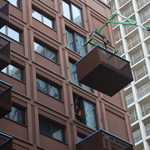This string is crucial to moving things forward. RE: your quote...that is *very* affordable in the big scheme of things. There's got to be other spin-off benefits to the most recent APT systems, not the least real-time equipment monitoring. (Some of the most modern systems tie-in to the safety and reporting functions).
Just glancing back at some of the earlier posts, some very good ones I have to catch-up on, but just did a quick Google to put context to one of the earliest posts, a quote from USToday, and it immediately struck me as being industry foot-dragging excuse. Many better systems are fully qualified now, but for a perspective on how 'out of whack' some claims are:
[If you step onto a train in Uzbekistan, you’ll discover a system far more advanced than anything built in the United States. The 4-year-old
Afrosiyob high-speed rail system connects the country’s two major cities with a modern, efficient and safe train that can get from one end of the 214-mile line to the other in 90 minutes. That’s roughly the same distance Amtrak trains travel between Boston and New York, a trip that takes nearly four hours.
And like many other rail systems of the United States (and underdeveloped countries), Afrosiyub is technologically safer because high-speed rail lines utilize high-tech accident-avoidance systems that have been implemented only on short stretches by Amtrak, which shuttles more than 30 million people every year, mainly through its Northeast Corridor.
“The Northeast Corridor has a hodgepodge of modern train control systems,” said Richard Harnish, executive director of the Chicago-based Midwest High Speed Rail Association. “We haven’t spent the money on the train tracks, and so Amtrak has been piecing together a patchwork system. We should make the existing infrastructure state of the art.”][...]
http://www.ibtimes.com/why-america-...lot-do-other-countries-moving-forward-1923428
Uzbekistan!




